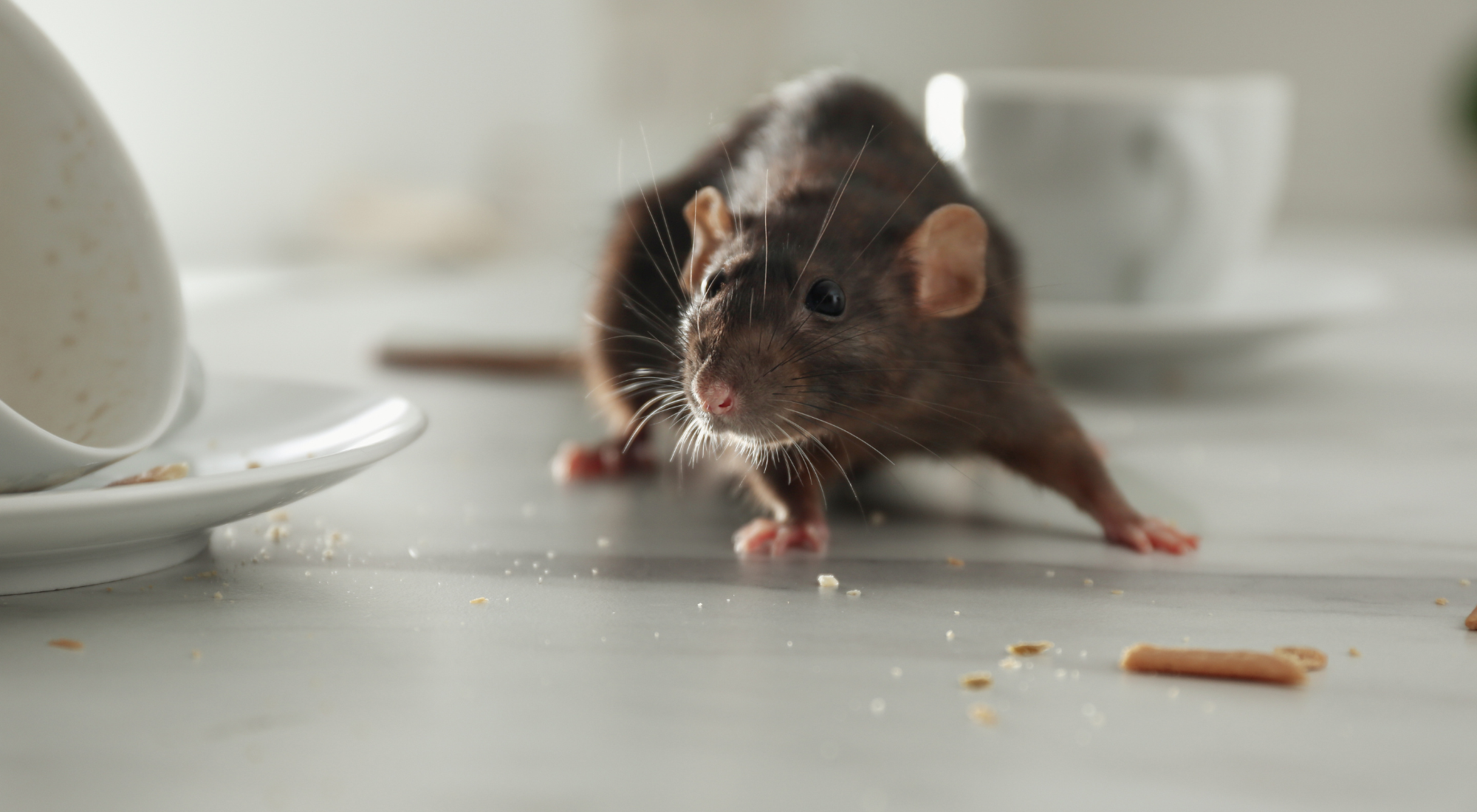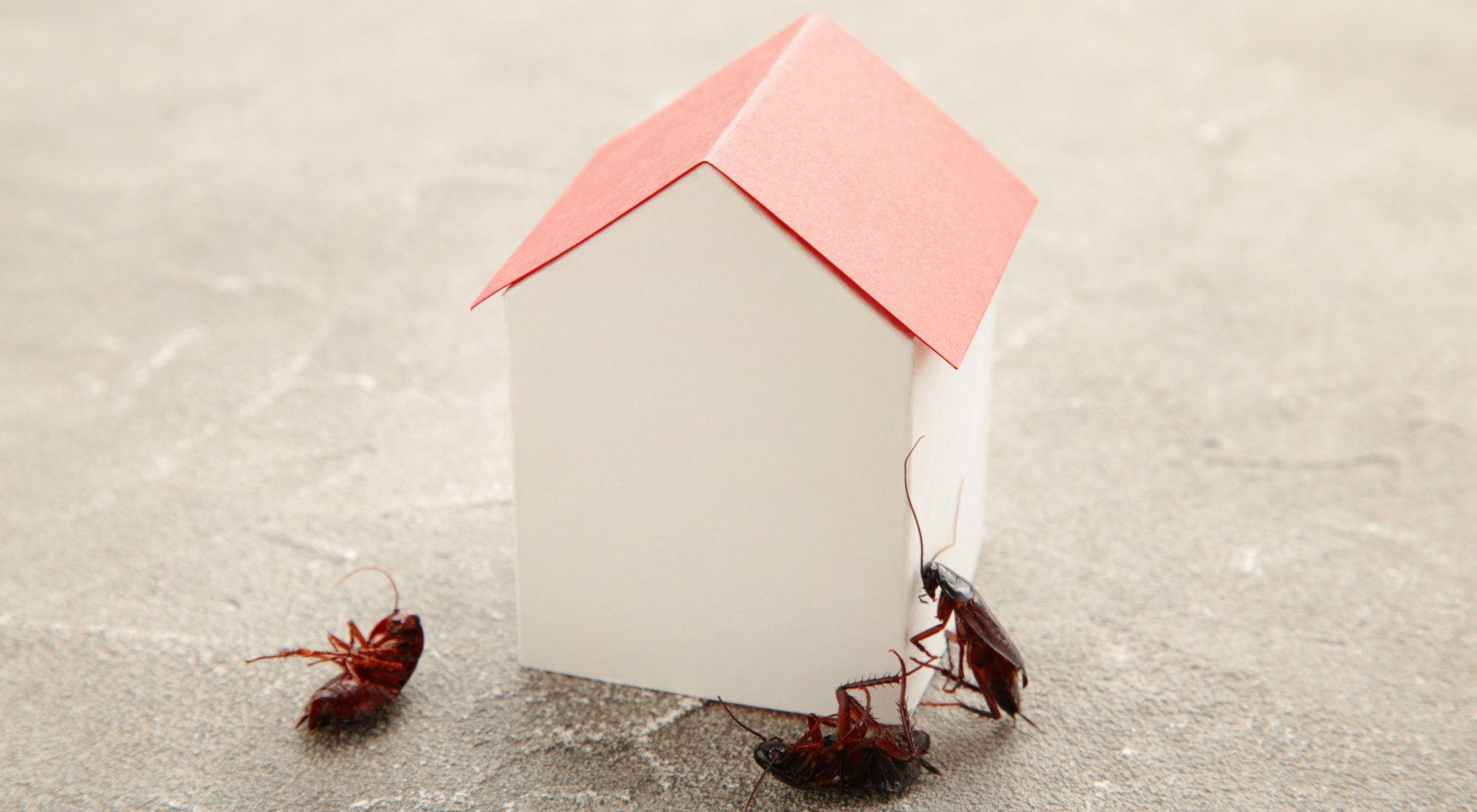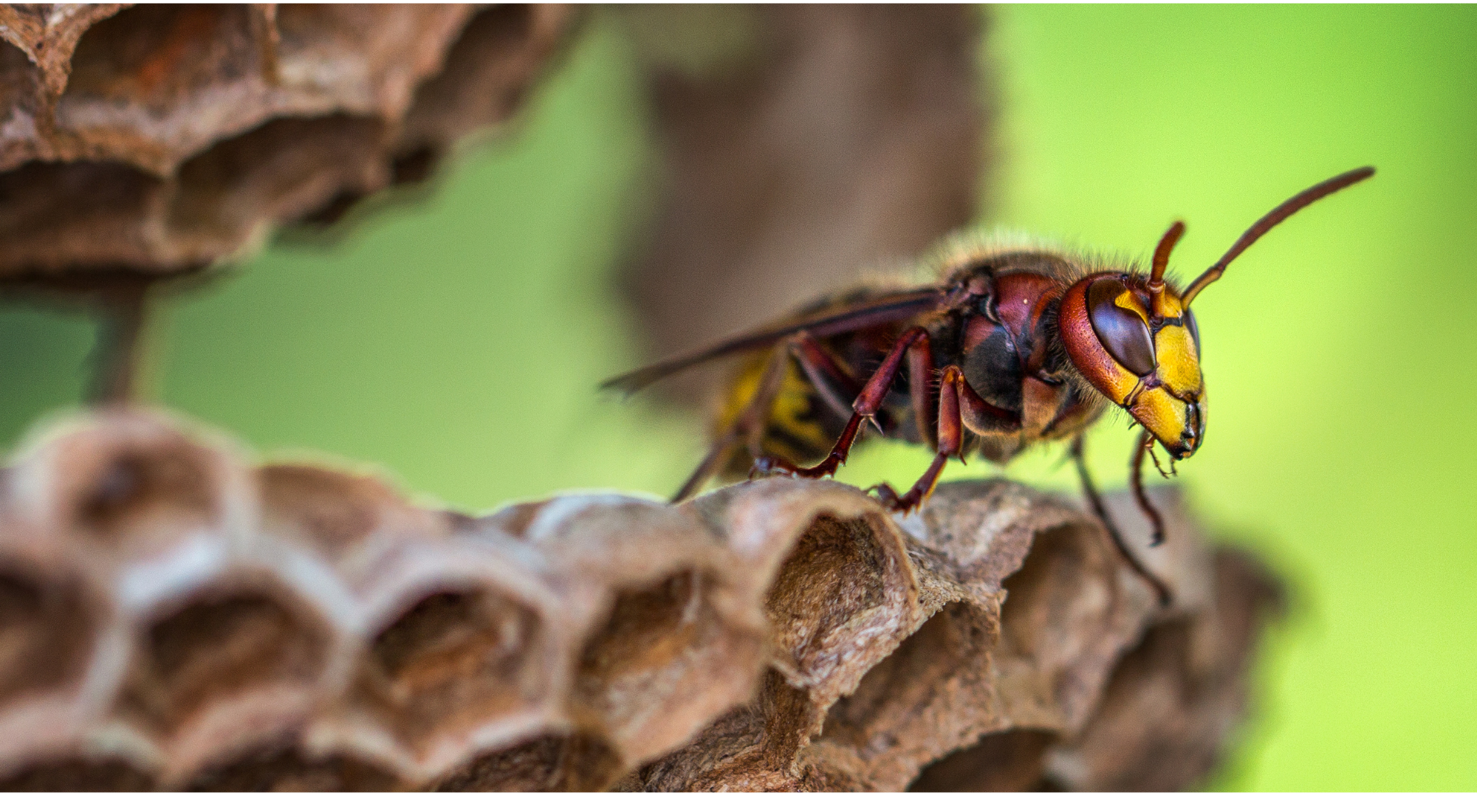Table of Contents
Welcome to the Ultimate Pest Control Guide, your comprehensive resource for maintaining a pest-free home or business environment. Throughout this guide to pest control, we will delve into various pests and effective management techniques, emphasizing the importance of prevention.
With expert insights and practical tips, you'll gain the knowledge needed to make informed decisions and safeguard your property from unwanted intruders. Whether you're currently dealing with a pest issue or seeking proactive measures, this ultimate pest control guide is your go-to resource.
Ensuring a pest-free home or office is crucial for human health and safety. Whether insects, rodents, or birds, pests can cause property damage, spread diseases, and create discomfort and unease. As homeowners and business owners, managing pests requires a combination of knowledge, expertise, and practical strategies.
This comprehensive pest control guide covers everything you need to know, from identifying the various pests that commonly require control to implementing the most successful management techniques. Furthermore, we will discuss the importance of prevention and provide valuable tips and best practices for keeping pests at bay.
Whether you're currently grappling with an existing pest problem or simply seeking to proactively prevent one from occurring, this ultimate pest control guide is tailored to meet your needs.
By concluding this article, you will have armed yourself with a profound understanding of pest control. This knowledge enables you to protect your property from unwanted visitors and maintain a pest-free environment.
Embark on this journey as we explore the fascinating world of pest control together. Let this ultimate pest control guide be your trusted companion every step of the way!
Pests are a prevalent issue faced by countless households, resulting in various inconveniences. From insects to rodents and other animals, numerous pests have the potential to infest a house and cause significant problems.
In this comprehensive and ultimate pest control guide, we will delve into the most common types of pests found in homes. Moreover, we will equip you with invaluable tips and strategies for effectively identifying, preventing, and controlling these pests.
Any organism that is unwelcome or harmful to people, food, or living conditions can be considered a pest.
There are many reasons why pests are a problem in homes, including the fact that they can cause structural damage, contaminate food, and spread diseases. Rodents, houseflies, and spiders are some of the most prevalent pests in the home.
They are known for their ability to chew through almost anything, including electrical wires and insulation material. It can cause severe damage to a house's framework. It can also create a fire hazard. Rodents, also known as disease carriers, can contaminate food and surfaces with droppings.
Insects are another common type of household pest, and many different species can invade your home. Ants, cockroaches, bed bugs, and fleas are some of the most common types of household insects. Insects can be challenging to control as they reproduce quickly and are often pesticide-resistant.
Other types of household pests include spiders, birds, and other animals. While these pests may not be as common as rodents and insects, they can still cause home problems.
For example, birds can build nests in chimneys and cause damage to roofing materials, while spiders can be poisonous and pose a risk to humans.
Identifying pests is essential to controlling them. By knowing what type of pest you're dealing with, you can choose the correct control method and take steps to prevent future infestations. Here are some tips for identifying household pests:
Look for signs of gnawing or chewing on wires, wood, or other materials. Droppings, urine stains, and scratching or scurrying noises from the walls or ceiling may also be signs of a rodent infestation.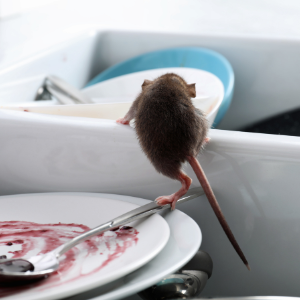
Different types of insects leave various signs of their presence. For example, ants may leave trails of food crumbs or appear in large numbers, while bed bugs may leave red, itchy bite marks on your skin. Cockroaches may leave droppings or egg cases behind.
Birds may leave nests or feathers behind, while squirrels or raccoons may leave droppings or damage to the exterior of your home.
If you're having trouble identifying a pest, consider contacting a pest control professional for help. They can provide expert advice and assistance in controlling pests in your home.
Preventing and controlling household pests requires ongoing effort and vigilance. Here are some additional tips to help you keep your home pest-free:
Regular cleaning can help prevent pests by eliminating potential food sources and hiding places. Vacuum carpets and floors regularly, and wipe down countertops and surfaces with soap and water.
Keep food in a sealed container and store it in the refrigerator or pantry. Don't leave food on countertops or tables; immediately clean up any spills or crumbs.
Mosquitoes and other pests breed in standing water, so eliminate any sources of standing water in and around your home. It includes flower pots, bird baths, and clogged gutters.
Close any openings in the walls or the foundation, and install screens on all windows and doors.
Many prefer natural pest control methods to chemical sprays and baits. Here are some natural pest control methods:
Many essential oils, such as peppermint, eucalyptus, and lavender, effectively repel insects. A few drops of essential oil in a spray bottle of water can help improve indoor air quality.
This powdery substance is the fossilized remains of tiny aquatic organisms called diatoms. Sprinkle it around the perimeter of your home or in areas where pests are present, and it effectively kills insects.
Sticky traps are a non-toxic way to capture insects, such as flies and spiders. Simply place the traps where pests are present and dispose of them once they are complete.
Using our ultimate pest control guide, DIY pest control is effective for many common pests, but sometimes it's best to bring in the pros. Here are some situations where you may need to hire a professional:
If you have a large infestation of pests, such as bed bugs or cockroaches, controlling them on your own may be challenging. The assistance of a trained pest control firm can end the current infestation and prevent more problems from occurring.
Some pests, such as wasps or bees, can be dangerous to handle alone. A pest control professional can safely remove nests or hives.
If you have recurring pest problems, it may be a sign of a more significant issue, such as a structural problem with your home. A pest control professional can help identify and address the underlying issue.
A wide variety of pests could infect your home, and keeping them out demands constant care and work.
If you follow the advice in this pest control guide, your house will be pest-free, and your family will remain healthy.
Remember, if you're having trouble controlling pests alone, don't hesitate to call a professional pest control company for help.
Pests can be a nuisance and cause various problems, such as health issues and property damage.
Hiring a pest control company is often the best solution for pest infestations. However, not all pest control services are the same, so it's crucial to do research before settling on one.
If you're looking for advice on choosing and evaluating a reliable pest control service, this ultimate pest control guide is for you.
Before selecting a pest control company, it is crucial to determine the type of pest problem you are dealing with. Some companies specialize in certain pests, and choosing a company with experience dealing with your pest problem is vital.
One of the first things to check when vetting a pest control company is its licensing and certification. Every state has licensing requirements, and ensuring that the company you are considering has the required licences is crucial. 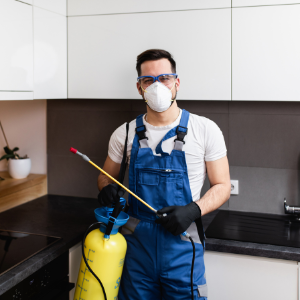
Certification from industry organizations such as the National Pest Management Association (NPMA) indicates a company's professionalism and expertise.
Referrals from friends, family, and neighbours are a good starting point when searching for a pest control company.
Additionally, checking online reviews from reputable sources such as Google, Yelp, and Angie's List can provide valuable insights into the company's quality of services.
It is essential to inquire about the treatment methods and products used by the pest control company. A trustworthy firm will only employ tried-and-true methods that comply entirely with all relevant standards.
Avoid companies that use harmful chemicals and products that can risk human and animal health.
A site inspection is critical for accurately assessing the pest problem and developing an effective treatment plan. When you choose a professional pest control service, the company should send someone out to examine your property for free and provide you with a full report of what they find.
The report should include the following:
A reputable pest control company should offer guarantees and warranties.
When a company provides a guarantee, it shows they have faith in their pest control services and are willing to stand behind their work by returning for free if the pests return.
Ensuring that the pest control company has liability and workers' compensation insurance is essential.
If anything goes wrong during treatment, liability insurance will cover the costs, and workers' compensation insurance will cover the costs of any injuries sustained by employees.
Price is important when selecting a pest control company. However, it is essential not to let price be the sole determining factor. The cheapest option may only sometimes be the best option, and it is crucial to consider the quality of services offered and the company's reputation.
Selecting the best pest control service possible requires careful research into the available options. It is essential to take the time to research and evaluate potential companies thoroughly.
The steps outlined in this pest control guide can help you decide on and select a reputable and professional pest control company.
A pest infestation in your home can be a major nuisance, compromising your comfort and potentially causing damage to your property. However, you can keep pests at bay and keep your home pest-free through preventative measures and efficient tactics.
This ultimate pest control guide will explore tips and tricks to help you prevent and control common household pests.
Preventing pest infestations requires a commitment to cleanliness and personal hygiene. Regularly clean all areas of your home, paying particular attention to

the kitchen, bathroom, and storage spaces.
Sweep and vacuum floors to remove crumbs and food particles that attract pests. Wipe countertops, sinks, and stovetops to eliminate food residue. Properly dispose of garbage and seal trash cans tightly.
You discourage pests from residing in your home by denying them access to food sources.
Even the tiniest crevices can be gateways for unwanted pests. Inspect your home thoroughly and identify any potential entry points. Check doors, windows, walls, and foundations for gaps and holes. Seal these openings using caulk, weatherstripping, or door sweeps.
Pay attention to areas around pipes and cables, as pests can also use them as entry points. Blocking off these entry points lets you keep unwanted critters out of your home.
Many pests are attracted to standing water, which serves as a breeding ground for them. Regularly check your home, indoors and outdoors, for any stagnant water sources. Repair any leaky pipes or faucets, and ensure drains and gutters function correctly.
Remove any water collected in trays, containers, or flower pots. Keep your yard well-drained to prevent water accumulation. By eliminating standing water, you eliminate the favourable conditions pests need to reproduce and thrive.
Your outdoor environment can be a potential source of pests. Trim shrubs and trees near your house to prevent branches from touching the exterior walls and acting as bridges for pests. Remove debris and clutter from your yard, as they provide hiding places for pests.
Store firewood away from your house, as it can attract termites and other wood-damaging insects. Keep compost piles covered and adequately maintained. Keeping your outdoor spaces well-maintained reduces the likelihood of pests entering your home.
Proper food storage in the kitchen and pantry is essential for avoiding pest problems. Put perishables in plastic or glass containers with airtight lids. Insects and rodents like ants and mice won't be able to get into your food storage this way.
Keep your pantry clean and organized, regularly checking for expired items and discarding them. Avoid leaving uncovered food on countertops, as it can attract pests. Implementing proper food storage practices removes the incentive for pests to invade your kitchen.
Natural repellents can effectively deter pests from your home. Certain scents repel insects, making them helpful in keeping pests away. Essential oils like peppermint, lavender, and eucalyptus have strong odours that pests dislike.
Soak cotton balls in these oils and place them in areas prone to pest activity, such as near entry points or cabinets. You can also create homemade sprays by diluting essential oils with water and using them as a natural pest repellent.
Additionally, planting pest-repelling herbs and flowers like basil, mint, and marigolds can provide protection.
If your efforts to keep pests at bay are unsuccessful, or if you're dealing with a severe infestation, it's advisable to seek professional pest control services.
Pest control experts have the knowledge, experience, and specialized equipment to identify and treat infestations effectively. They can employ various methods, such as baiting, trapping, or using chemical treatments, depending on the type of pest and the severity of the infestation.
Professional pest control services ensure the safety of your home and family while providing long-term pest management solutions.
Preventing and controlling pests in your home requires a combination of proactive measures and strategic actions. Keep your home pest-free by keeping it clean, closing off any access holes, draining any standing water, and securing all food sources.
Natural repellents and professional pest control services can provide additional support when needed. Regular maintenance and ongoing vigilance are crucial to keeping your home pest-free.
Commercial and industrial buildings require pest control just as much as private residences.
Business settings such as restaurants, hotels, warehouses, and offices can face unique pest control challenges due to the nature of the business, the size of the property, and the type of pests present.
Commercial properties can vary significantly in size, layout, and the types of pests they are likely to attract. Restaurants, for example, may face problems with pests such as cockroaches, rodents, and flies, while hotels may have issues with bed bugs and mosquitoes.
Warehouses and factories, on the other hand, may face problems with rodents, birds, and insects.
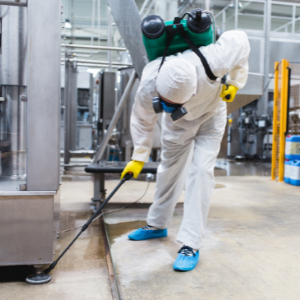
Commercial properties face unique pest control challenges compared to residential properties. One of the main challenges is the property's size and the building structure's complexity.
Industries often have large open spaces, multiple entry points, and complex ventilation systems, making it difficult to control pests. These properties usually store large amounts of food and other products, which can attract pests.
Another challenge is the nature of the business. For example, restaurants require regular cleaning and sanitation to prevent pests, which can also create ideal conditions for pests if not done correctly.
Guests may unknowingly bring pests into hotels, which can lead to infestations if not detected and treated promptly.
To ensure that commercial establishments continue to provide a clean and risk-free atmosphere for their employees, customers, and visitors, legislation and standards governing pest management are in place.
Commercial properties must have regular pest control inspections and treatments in many countries to prevent infestations.
Many sets of regulations or guidelines apply to commercial pest control. These can change to accommodate different types of businesses. They can also vary depending on the property's location.
For example, restaurants and food processing plants may be subject to stricter regulations to prevent contamination of food products.
In addition, businesses might have to keep records of their pest control procedures to demonstrate that they follow the rules.
Pest control is essential for businesses and commercial properties to maintain a safe and healthy environment for employees, customers, and visitors.
The nature of the business, the size of the property, and the kinds of pests can already bring their own distinct issues to commercial properties.
Compliance with regulations and standards for commercial pest control is essential to prevent infestations and maintain a clean and safe environment.
Pest control is crucial to maintaining a healthy and comfortable living environment. However, it's essential to understand that various pest control methods can impact the environment.
In this ultimate pest control guide, we will delve into the environmental implications of pest control practices and explore eco-friendly alternatives that can help minimize harm while effectively managing pests.
Pests threaten public health, agriculture, and infrastructure. They can transmit diseases, damage crops, and compromise the structural integrity of buildings. Effective pest control is necessary to protect human well-being and maintain ecological balance.
Although commonly employed, traditional pest control measures frequently cause harm to the surrounding ecosystem. Chemical pesticides, one of the most common approaches, can harm the environment.
These pesticides contain chemicals that can persist in the environment, contaminating soil, water bodies, and non-target organisms.
Additionally, indoor spraying of insecticides releases volatile organic compounds (VOCs) that contribute to air pollution, posing health risks to humans and pets.

Using chemical pesticides can adversely affect the environment. These pesticides can potentially harm non-target species, such as beneficial insects, birds, and mammals, disrupting ecosystems and reducing biodiversity.
Furthermore, pesticide runoff from treated areas can contaminate waterways, affect drinking water, and harm aquatic organisms. Prolonged pesticide use can also degrade soil quality, impacting nutrient cycling, beneficial microorganisms, and overall soil health.
To mitigate the environmental impact of pest control, Integrated Pest Management (IPM) offers a sustainable and eco-friendly alternative. IPM is a holistic approach that minimizes pesticide use while effectively managing pests. It involves several vital principles and practices:
Encouraging natural predators and beneficial organisms can help control pest populations. For example, using bat houses to attract insect-eating bats can effectively reduce the reliance on chemical pesticides.
Implementing cultural practices can help deter pests and reduce the need for chemical interventions. Crop rotation, proper waste management, and cleanliness can create unfavourable conditions for problems, preventing infestations.
Physical barriers, traps, and mechanical removal of pests can effectively reduce infestations without relying on chemical solutions. For instance, installing mesh screens on windows and doors or using pheromone traps for monitoring and capturing pests are eco-friendly alternatives.
Embracing eco-friendly pest control methods offers numerous advantages:
Eco-friendly pest management technologies conserve ecosystems and minimize pollution by using less toxic chemicals. They prioritize the long-term health of the environment.
Eco-friendly approaches focus on preventing and addressing pest issues' underlying causes. By creating unfavourable conditions for pests, they offer effective pest management solutions in the long run.
Limiting exposure to toxic chemicals benefits human health, especially for vulnerable populations such as children. Eco-friendly pest control methods prioritize the well-being of both humans and the environment.
Adopting environmentally responsible practices enhances the reputation of pest control companies. Attracting eco-conscious customers requires showing that you care about the planet.
Understanding the environmental impact of pest control is crucial for adopting more sustainable practices.
Traditional methods may effectively control pests but have significant ecological risks. Integrated Pest Management (IPM) and eco-friendly approaches provide viable alternatives that prioritize long-term effectiveness while minimizing environmental harm.
By adopting these methods, pest control experts can significantly contribute to preserving human and environmental health.
As the world continues to evolve, so does the field of pest control. From technological advancements to sustainable practices, the future of pest control is looking brighter than ever.
The pest control industry is constantly changing due to technological advances, shifts in consumer preferences, and environmental concerns.
This ultimate pest control guide will explore the future trends in pest control and why understanding these trends is essential for both professionals and consumers.

Pest control companies increasingly use technology to improve their efficiency and effectiveness. The following are some technological advancements in pest control:
Pest control companies increasingly use drones and robotics to access hard-to-reach areas and provide a more precise and efficient service. This equipment can help with inspection, baiting, and pesticide application.
Digital pest control is another technological advancement that is changing the industry. With this method, sensors are placed around the home or business to detect the presence of pests. The pest control professional receives an alert when a sensor detects a pest and takes the appropriate action.
Developing new pest management methods that are safer for people and the environment is ongoing. For example, some companies are developing organic pesticides made from essential oils that are less harmful than traditional chemical-based pesticides.
Using technology in pest management offers various advantages, including better results with less effort and money. It also allows for more targeted treatments and can help reduce the amount of pesticide needed.
Consumers who become more conscious of environmental issues demand eco-friendly pest control approaches. The following are a few of the current sustainable pest management techniques:
Sustainable pest control is an approach that aims to minimize the impact of pest control on the environment and human health. It involves using non-toxic and natural methods to control pests, such as trapping and exclusion.
Sustainable pest control is crucial because it protects the environment and human health. Chemical pesticides can have harmful effects on the environment and can also be dangerous to humans and pets.
Green pest control products and services are becoming increasingly popular as consumers seek environmentally friendly options. These products and services, such as essential oils and botanicals, control pests using natural and non-toxic methods.
"Integrated Pest Management" refers to a strategy for dealing with pests that employ multiple techniques. It involves monitoring and identifying pests, using non-chemical methods to control them, and only using pesticides as a last resort.

Sustainable pest control has many benefits, including reduced exposure to harmful chemicals, improved indoor air quality, and a safer environment for pets and wildlife.
The growing emphasis on health and safety has led to a heightened focus on sustainable pest control. This approach prioritizes eco-friendly methods, minimizing harm to humans and the environment.
By adopting sustainable practices, individuals and businesses create safer, healthier spaces while effectively managing pest issues.
If not utilized properly, pesticides pose a risk to human and animal health. Exterminators learn how to safely use chemicals and what precautions to take so that they don't harm themselves or others.
Regulations and guidelines are in place to ensure that pest control professionals use pesticides safely and responsibly. These regulations require that professionals be licenced and follow specific pesticide application procedures.
Pest control companies increasingly use eco-friendly products that are safer for humans and the environment. These products use natural and non-toxic ingredients to control pests.
As the world continues to evolve, so does the field of pest control. From technological advancements to sustainable practices, the future of pest control is looking brighter than ever.
Insect removal experts can better serve their clients' needs by monitoring and adapting to these shifts in the industry.
While technology is playing a massive role in the future of pest control, it's important to remember that sustainability, health and safety, and preventative measures are also essential components.
We must prioritize these aspects as we move forward to create a more sustainable and healthy world.
The future of pest control is looking promising. With the right mindset and practices, pest control professionals can continue providing practical solutions while promoting a healthier and more sustainable world.
We can all work together to create a pest-free future by staying informed and ahead of the curve.
Calling a professional pest control service can be tempting when dealing with pests in your home. While convenient, these services can be rather pricey and frequently involve dangerous chemicals harmful to you, your family, and your pets.
Luckily, there are many DIY pest control tips and natural remedies that you can try first. If you're looking for an alternative to chemical pest control, this ultimate pest control guide is for you.
The first step in DIY pest control is identifying the pest you're dealing with. Different problems require different treatment methods, so knowing what you're up against is crucial. Pests in the home often consist of:
Take some time to research the pest and learn about its habits, behaviours, and preferred habitats. It will help you understand how to prevent and eliminate them.
Preventing pests from entering your home is an excellent first line of defence. Here are some tips for avoiding problems:
If you have a pest infestation, you may need to take more drastic measures. Here are some DIY pest control methods:
Sprinkle an equal mixture of borax and sugar on any ant trails you may have discovered. The borax will kill the ants that the sugar has lured in.
Sprinkle a mixture of baking soda and sugar, in equal parts, over roach-infested regions. The sugar attracts cockroaches, and the baking soda kills them.
Use steel wool to seal cracks or crevices in your home's foundation and walls. Pests can't chew through steel wool, so this is an effective barrier.
There are many types of traps available for different pests. Use live traps to capture and release small animals like mice and rats. Use sticky traps for insects. Place the traps in areas where you've seen pests and dispose of them properly.
You can use several natural repellents for a more natural pest control approach. Some examples are:
Peppermint, lavender, and eucalyptus essential oils can repel ants, spiders, and other pests. Mix a few drops of these oils with water and spray the solution in areas where you commonly find problems.
Citrus peels are a natural insect repellent that can repel ants, fleas, and other pests. Simply place the peels in areas where the pests are present and replace them with fresh ones every few days.
Vinegar is a natural pest repellent that can help eliminate ants, spiders, and other pests. Spray troublesome areas with a mixture of equal parts vinegar and water.
Diatomaceous earth comes from the fossilized remnants of tiny organisms called diatoms. It can help kill pests like ants, cockroaches, and bed bugs. Simply sprinkle a small amount of diatomaceous earth in areas with pests.
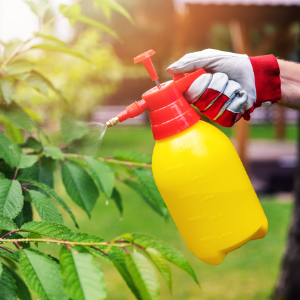
Ants can be a significant nuisance in and around your home. To get rid of them, try the following natural remedies:
Cockroaches are among the most common pests in households. To eliminate them, try the following natural remedies:
Bed bugs can be one of the most challenging pests to eliminate. To get rid of them, try the following natural remedies:
In addition to the do-it-yourself strategies highlighted above, there are also several natural medicines whose sole purpose is to ward off mosquitoes. Mosquitoes are a nuisance and can carry harmful diseases such as malaria and dengue fever.
Therefore, it is crucial to take measures to repel them. Mosquitoes can be a significant pest, especially during the summer months.
Try the following natural remedies to repel them:
One effective way to repel mosquitoes is by planting certain plants in your garden.
Diffusers containing essential oils like lavender, eucalyptus, or citronella candles are two more methods. Citronella candles work by releasing a scent that mosquitoes find repulsive.
Likewise, to deter mosquitoes, one can apply essential oils to the skin or put them in a diffuser, such as lavender, basil, lemongrass, or eucalyptus.
It is important to note that while natural remedies can effectively repel mosquitoes, they may not provide complete protection.
Other precautions, such as mosquito nets and protective clothing, remain crucial, particularly in regions with dense mosquito populations or where mosquito-borne diseases are common.
Using natural remedies to repel mosquitoes can be an effective and eco-friendly option. By incorporating these remedies into your pest control routine, you can enjoy a mosquito-free summer without harsh chemicals or pesticides.
There are several benefits to using natural remedies for pest control. First and foremost, natural remedies can effectively control pests without using harmful chemicals.
Many natural remedies, such as essential oils and herbs, have been proven to repel or kill pests, making them a safe and natural alternative to toxic pesticides.
Another perk of choosing natural treatments is that they are typically harmless to humans and animals. Natural insecticides are safe for humans and animals, unlike traditional pesticides.
This makes them an excellent option for households with children or pets.
Using natural remedies is also more environmentally friendly than traditional pest control methods.
Pesticides can adversely affect the environment by contaminating water sources and killing non-targeted species. By using natural remedies, you can reduce your impact on the environment and help protect wildlife.
Finally, using natural remedies can be cost-effective. Making natural treatments at home with vinegar, baking soda, and essential oils is easy.
This method may be more cost-effective than employing a pest control business or buying chemical pesticides.
Natural treatments for pest management are preferable to chemical pesticides for several reasons. It may also be the most economically sensible choice, saving you money over time.
If you have tried DIY pest control methods for several weeks and have not seen any improvement in pest infestations, it may be time to call a professional. Other signs include:
If you've been attempting to control a pest infestation on your own and you start to notice the problem spreading to other areas of your home, it's a sign that your DIY methods may not be effective.
This could mean that the pests have developed a resistance to the products you're using or that you need to be using conventional techniques correctly.
If you need help determining what kind of pest you're dealing with, choosing the right products or methods to control it can take some work.
Some pests require specific treatments that may not be effective for other types. If you cannot identify the pest, it may be time to call a professional pest control company.
If you've been using DIY pest control products and you're not seeing any improvement in the pest problem, however, it's a sign that your products may need to be more effective.
Additionally, reading the labels and following the instructions carefully when using pest control products is essential. If you do not see any improvement, try a different product or call a professional for assistance.
Therefore, it's always best to consult a professional pest control company if you need to control a pest infestation on your own effectively or if your DIY efforts are not working.
Moreover, they know how to determine what kind of pest it is, what kind of treatment would be most effective, and how to ensure it never returns.
While DIY pest control methods using the tips in this ultimate pest control guide can be effective in many cases, there are times when it is necessary to call in a professional pest control company. Here are some reasons why:
If you have a severe pest infestation, it is best to call in a professional. Professionals in the field of pest management have the education, equipment, and expertise to deal with even the worst infestations.
They can determine the origin of the problem, administer appropriate treatment, and advise on how to avoid a recurrence.
Certain pests like wasps, bees, and rodents can threaten your health and safety.
Attempting to eliminate these pests alone can be dangerous and result in severe injury or illness. Companies specializing in pest management have the resources and expertise to eliminate these threats.
If you cannot identify the pest or do not know how to eliminate it effectively, it is best to call in a professional.
Professionals in pest management can assess the nature of the pest and the best way to destroy it. They are also a good resource for advice on preventing future infestations.
If misused, DIY pest control methods can be hazardous to your family and pets. When it comes to eliminating pests, the experts at pest control firms only employ safe techniques for humans and dogs.
It's time to bring in the pros for pest control if your do-it-yourself attempts haven't worked. Professionals in pest management are best equipped to determine the source of an infestation and provide a permanent remedy that will prevent future problems.
While DIY pest control methods from this ultimate pest control guide can be effective, there are times when it is necessary to call in a professional pest control company.
If you are dealing with a severe infestation, dangerous or health-risking pests, or cannot identify or eliminate the nuisance, it is best to call in a professional. Moreover, if you have concerns about your family and pets' safety or an ongoing pest control problem, seeking professional help is highly recommended.
Professional pest control providers possess the training, tools, and experience to handle even the most challenging pest control situations effectively.
Maintaining a healthy and pest-free garden or outdoor space is essential for any homeowner or gardening enthusiast. However, pests can wreak havoc on plants, flowers, and vegetables, affecting your outdoor area's overall aesthetics and productivity.
The section of this pest control guide will explore effective pest control techniques tailored specifically for gardens and outdoor spaces. Using these methods, you can keep common garden pests at bay and foster a healthy growing environment for your plants.
Gardens are susceptible to various pests that can damage plants and hinder their growth. Here are some common garden pests and methods to control them:
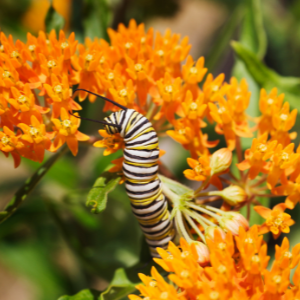
Because they feed on the sap of plants, these tiny insects cause wilting and distorted growth. Spraying water and insecticidal soap on plants, attracting predatory insects like ladybirds, and utilizing reflective mulch are all effective aphid control methods.
These slimy pests can devour leaves, flowers, and young seedlings overnight; control slugs and snails by handpicking them; create barriers with copper tape or diatomaceous earth; or use beer traps.
Caterpillars can munch on foliage, leaving behind chewed leaves and damaged plants. You can control caterpillars by introducing natural predators like birds or beneficial insects, applying Bacillus thuringiensis (BT) insecticide, or practising crop rotation.
These larger pests can cause significant damage to gardens by nibbling on plants and flowers, controlling deer and rabbits by installing fences, using deterrent sprays; or minimizing synthetic chemicals. Here are some organic gardening practices to prevent and manage pests:
Healthy soil provides plants with natural defences against pests. Focus on improving soil fertility through composting, mulching, and organic amendments.
Planting certain flowers, herbs, or vegetables can help repel pests or attract beneficial insects. For example, marigolds deter nematodes, and planting basil alongside tomatoes can deter aphids.
Rotate crops each season to prevent the soil's buildup of pests and diseases. This practice disrupts the life cycles of pests, reducing their populations naturally.
Overwatering can attract pests and promote fungal diseases. Early in the day, water plants at the base to ensure proper drainage and prevent waterlogged soil.
When dealing with pests in outdoor areas beyond the garden, such as patios, decks, or picnic areas, opting for environmentally friendly pest control methods is essential. Here are some eco-friendly approaches:
Use natural repellents like essential oils (such as citronella, peppermint, or eucalyptus) to deter mosquitoes and other flying insects. Place citronella candles or oil diffusers strategically to create a barrier.
Set up traps, such as sticky traps or pheromone traps, to capture flying insects or crawling pests. These traps are chemical-free and can be effective in reducing pest populations.
Install screens, nets, or mesh around outdoor seating areas to prevent pests from intruding. Seal cracks and gaps in walls, doors, and windows to prevent entry.
Make your outdoor area less attractive to pests by removing standing water sources, keeping trash cans sealed, and trimming bushes and trees away from structures to eliminate hiding places.
By incorporating these garden- and outdoor-specific pest control techniques into your routine, you can protect your plants, enjoy your outdoor spaces, and promote a sustainable approach to pest management.
When it comes to pest control, safety should always be a top priority. Whether you're a professional pest control technician or a DIY enthusiast, taking the necessary precautions to protect yourself, your family and the environment is essential.
The section of this pest control guide will delve into the importance of safety measures during pest control procedures and provide guidelines for ensuring a safe pest control experience.

Pest control involves using chemicals and potentially hazardous substances to eliminate pests.
Here's why safety precautions are crucial:
Pesticide exposure can pose health risks such as skin irritations, respiratory problems, or even more severe conditions. Following safety measures minimizes the chance of adverse health effects.
Using pesticides responsibly helps prevent soil contamination, contamination of water sources, and damage to the ecosystem. Proper application techniques and safe disposal of chemical residues are essential for preserving the environment.
Adhering to safety regulations and guidelines ensures compliance with local, regional, and national pest control laws. It also helps maintain professional standards and ethical practices in the industry.
Wearing appropriate protective equipment and gear minimizes pesticide exposure and maintains personal safety. Here are some essential items:
Respirators or face masks with appropriate filters are necessary when handling pesticides in aerosol or dust form. They provide respiratory protection against inhaling potentially harmful chemicals.
Wearing long sleeves, pants, and shoes can help protect your skin from pesticides. The usage of chemical-resistant gloves and goggles is also commonplace.
Wearing a hat or a protective helmet helps shield the head from accidental pesticide contact or falling debris during pest control treatments.
Proper storage and handling of pest control products are essential to prevent accidents, contamination, or unintended exposure. Consider the following guidelines:
Carefully read and understand the product labels, including instructions, warnings, and safety precautions. Follow the recommended dosage and application methods.
Store pesticides in a locked cabinet or designated area inaccessible to children and pets. Keep them away from food, water sources, and areas prone to high temperatures or direct sunlight.
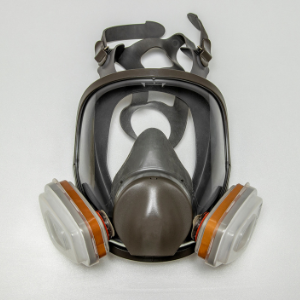
Ensure pesticide containers are tightly sealed and intact to prevent leakage or spills. Avoid transferring pesticides to unauthorized containers, which may lead to confusion or accidental misuse.
Dispose of pesticide containers according to local regulations. It is essential to properly dispose of any unused pesticides or expired products, including rinsing out the empty containers.
Extra precautions are necessary when conducting pest control treatments in homes or outdoor spaces where children and pets reside. Consider the following tips:
Restrict access to treated areas during and after pest control treatments. Create physical barriers or designate safe zones where children and pets can stay.
Inform the pest control professional about children or pets in the household. They can recommend specific treatments or alternative methods that prioritize safety.
Follow the recommended waiting period for re-entry as stated on product labels or as instructed by a pest control expert. It ensures the treated area is safe for occupancy after the designated time.
After the recommended re-entry period, clean treated surfaces to remove any pesticide residues that may have settled. It reduces the risk of accidental contact.
By following these safety measures, pest control professionals and DIY enthusiasts can carry out pest control procedures effectively while minimizing risks to themselves, their loved ones, and the environment.
Pests cause physical damage and discomfort, trigger allergies, and worsen respiratory conditions.
The section of this pest control guide will explore the connection between pests and allergies, identify common pests that can trigger allergic reactions, and provide tips for allergy-proofing your home through effective pest control measures.
This ultimate pest control guide will also discuss recommended pest control practices for individuals with allergies or asthma.
Certain pests are notorious for triggering allergic reactions. Here are some common pests that are known to cause allergies:
Cockroach droppings, shed skins, and saliva can contain allergens that may cause asthma attacks, allergic rhinitis, and other respiratory symptoms.
These microscopic pests thrive in dust and feed on skin flakes. Their feces and body parts contain allergens that can trigger asthma, hay fever, and eczema.
Although bed bugs cannot spread diseases, some people may experience severe reactions to their bites. Itchy red welts and skin irritation are common symptoms.
Pests can exacerbate respiratory allergies, particularly in individuals already sensitized to allergens. Here's how pests contribute to respiratory issues:
Pest droppings, urine, saliva, shed skin, and decomposing bodies can release allergens into the air, leading to allergic reactions and respiratory symptoms.
Some pests' feces and urine proteins, like those of cockroaches and rats, can become airborne and cause allergic reactions if inhaled.
When exposed to pest allergens, individuals with asthma may experience worsened symptoms, an increased frequency of attacks, and decreased lung function.
To minimize allergies caused by pests, consider the following tips for effective pest control and allergy-proofing your home:
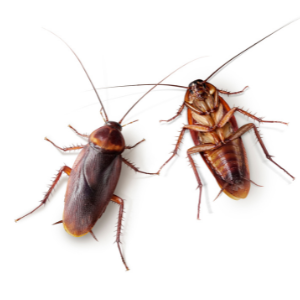
Keep your home clean and free of dust, debris, and food particles that attract pests. Vacuum carpets, mop floors, and dust surface regularly.
Seal cracks, gaps, and openings in walls, doors, windows, and foundations to prevent pests from entering your home.
Keep food in airtight containers and remove spills immediately to deter bugs.
Use dehumidifiers in damp areas to control moisture, as pests like dust mites thrive in humid environments.
Regular inspections by a pest control company can keep bug problems from getting out of hand.
If you or a family member have allergies or asthma, taking additional precautions during pest control treatments is essential. Consider the following recommendations:
Inform the pest control company about any allergies or respiratory conditions in your household so they can take appropriate measures.
Opt for low-allergen or eco-friendly pest control products that have minimal impact on indoor air quality.
If necessary, temporarily relocate individuals with severe allergies or asthma during extensive pest control treatments.
Ensure proper ventilation during and after pest control treatments to remove airborne particles or odours.
Understanding the link between pests and allergies, using efficient pest management techniques, and catering to the requirements of people with allergies and asthma can help create a safer and better living environment for everyone.
Numerous myths and misconceptions circulate within the pest control industry, often resulting in ineffective or potentially harmful practices. Therefore, it is essential to separate fact from fiction and ensure that you make informed decisions regarding pests.
Our mission is to debunk common myths surrounding pests and pest control in this dedicated section of the comprehensive pest control guide. By tackling these misconceptions head-on, we aim to empower you with the knowledge necessary to navigate the pest management world confidently. Thus, with a clear understanding of the truth, you can effectively implement effective strategies and make informed choices to address pest-related challenges.
We will explore various misconceptions about DIY methods and shed light on their limitations. Additionally, we will delve into alternative approaches that have been proven to be ineffective in achieving long-term pest management.
By the time you reach this section's end, you will understand the realities surrounding pests and be well-equipped to make informed decisions based on accurate information. It's time to dispel the myths and pave the way for effective pest control strategies.
There are several myths surrounding pests and their control. Let's debunk some of the most common ones:
Cats can effectively eliminate all rodents from a property.
While cats are natural predators, they may not be able to eradicate a rodent infestation. Rodents can reproduce quickly and hide in inaccessible areas.
Pests only infest dirty or unkempt homes.
Pests can infest any home, regardless of its cleanliness. While poor sanitation can attract certain pests, others may enter homes for shelter, water, or food.
Ultrasonic devices repel pests effectively.
Although there is much discussion about the efficacy of ultrasonic devices, they promise to deter pests by delivering high-frequency noises. According to research, they have a negligible effect on pest management.
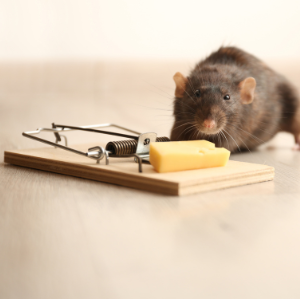
DIY pest control methods are popular, but not all approaches are effective or safe. Let's address some misconceptions:
Home remedies can eliminate pests.
While some home remedies in this ultimate pest control guide may provide temporary relief, they are often ineffective in eradicating a pest infestation. A professional pest control service is usually necessary for a permanent fix.
Over-the-counter pesticides are always safe and effective.
Over-the-counter pesticides can be helpful for minor pest problems when used correctly. However, they may not be suitable for severe infestations or specific pests. Misuse or overuse of these products can also harm human health and the environment.
In the quest for pest control, specific alternative approaches have gained attention. However, it's essential to understand their limitations.
Using essential oils as the sole pest control method
While certain essential oils have insect-repellent properties, as mentioned in this ultimate pest control guide, they are typically ineffective as standalone pest control solutions. They may provide temporary relief but are unlikely to eliminate a widespread infestation.
Plant some specific plants to repel pests.
Some plants are known for their pest-repellent properties, but relying solely on these plants to control pests is likely to yield insignificant results. Integrated pest management strategies that combine multiple techniques are more effective.
That is why in this ultimate pest control guide, we emphasize that making educated choices about pest management can dispel myths, clear up misunderstandings about do-it-yourself strategies, and investigate the limitations of alternate solutions.
Remember, consulting with a professional pest control company is often the most effective and safest solution for managing pest infestations.
It is essential to balance pest control and environmental sustainability in modern agriculture. The section of this pest control guide will explore the concept of sustainable agriculture regarding pest control.
We will discuss integrated pest management (IPM) techniques, eco-friendly pest control methods, and the importance of balancing pest control with environmental preservation in farming practices.
Additionally, we will highlight government initiatives and programs that promote sustainable pest management in agriculture.
Integrated Pest Management (IPM) is an approach that focuses on long-term pest control strategies while minimizing the use of chemical pesticides. Here are the key elements of IPM in sustainable agriculture:
Regularly monitor crops for pest populations, identify pest thresholds, and implement preventive measures such as crop rotation, habitat manipulation, and using pest-resistant varieties.
Encourage natural enemies of pests, such as beneficial insects and predators, to control pest populations. Natural pesticides, protecting natural habitats, and releasing predatory insects are all viable options.
Implement cultural practices that create unfavourable conditions for pests, such as proper irrigation management, maintaining healthy soil, and using appropriate planting techniques.
If pest populations exceed the economic threshold, judiciously use chemical pesticides as a last resort, choosing those with low environmental impact and following label instructions for safe and effective application.
Farmers can adopt eco-friendly methods that minimize the impact on ecosystems and non-target organisms to ensure environmental sustainability in pest control. Some eco-friendly pest control methods include:
Rotate crops to disrupt pest life cycles, reduce pest populations, and improve soil health. Different crop types can also provide natural pest control by altering pest habitats and food sources.
Encourage the presence of beneficial organisms that prey on pests or lay their eggs in pests, controlling their populations naturally. Creating homes and supplying them with food is one way to help.
Plant specific crops that attract pests away from main crops, acting as sacrificial plants. It diverts pest populations to a concentrated area for easier control.
Use physical barriers such as nets, screens, or row covers to prevent pests from reaching crops while allowing airflow and light.

Sustainable agriculture aims to minimize the ecological footprint of farming activities. To achieve this balance, farmers can implement the following practices:
Maintain soil fertility through cover cropping, organic matter incorporation, and reduced tillage. Healthy soils support strong plant growth, which can withstand pest pressure.
Optimize water usage through efficient irrigation techniques to prevent excess moisture from creating favourable conditions for pests.
Preserve and enhance on-farm biodiversity by maintaining hedgerows, planting native vegetation, and providing habitat for beneficial organisms. It promotes a more diverse ecosystem that can naturally regulate pest populations.
Continuously educate farmers and agricultural workers about sustainable pest management practices, emphasizing the importance of ecological balance and reducing reliance on chemical pesticides.
Governments and agricultural organizations are crucial in promoting sustainable pest management practices. Some initiatives and programs include:
Governments allocate funds to research sustainable pest control methods, such as biological controls, pheromone-based traps, and resistant crop varieties.
Agricultural extension services provide farmers with education, training, and technical support, helping them adopt sustainable pest management practices and stay updated on the latest advancements.
Governments and certifying agencies establish standards for organic and sustainable farming practices. Farmers who meet these standards can obtain certifications that enhance the market value of their products.
Governments may offer financial incentives, subsidies, or grants to farmers who adopt sustainable pest management practices. It encourages the adoption of environmentally friendly methods.
Moreover, sustainable agriculture and pest control go hand in hand, ensuring long-term productivity while minimizing environmental impacts.
By implementing integrated pest management (IPM), utilizing eco-friendly pest control methods, and supporting sustainable practices through government initiatives, the agricultural sector can become more environmentally conscious and resilient.
Effective pest control requires tailored approaches to address the unique challenges of different environments.
This ultimate pest control guide section will also explore pest control strategies for specific environments, such as apartments and multi-unit buildings, historic or older homes, commercial kitchens and food establishments, and rural areas.
Moreover, understanding these environments' specific considerations and challenges can help implement targeted pest control measures for optimal results.
Living in close proximity to neighbours in apartments and multi-unit buildings can present unique challenges for pest control. Here are some considerations and strategies:
Conduct routine inspections of common areas, individual units, and shared utilities to identify pest issues early and prevent their spread.
Encourage open communication between residents, property management, and pest control professionals to address pest infestations and implement preventive measures promptly.
Adopt an IPM (Integrated Pest Management) strategy for long-term pest control, including inspections, sanitation improvements, targeted treatments, and resident education.
Seal cracks, gaps, and openings in walls, windows, and doors to prevent pests from entering the building and moving between units.
Historic or older homes often have unique architectural features and construction materials that can make pest control challenging. Consider the following strategies:
Work with pest control professionals experienced in dealing with historic structures to ensure pest control methods do not compromise the integrity or historical significance of the building.
Address any structural issues, such as damaged wood or cracks, that can provide entry points for pests and create conducive environments.
Manage moisture levels within the home to prevent conditions favourable for pests, such as termites and mould.
Implement an IPM approach that combines preventive measures, targeted treatments, and regular monitoring to minimize the use of chemical pesticides.

Due to the abundance of potential food sources, insect infestations are common in commercial kitchens and other food service facilities. Here are some essential things to keep in mind when dealing with pests:
It goes without saying that maintaining a clean and hygienic environment by adhering to rigorous sanitation practices, promptly removing food waste, and properly storing food.
Conduct frequent inspections to detect signs of pest activity early and implement immediate corrective actions.
Educate staff on proper food handling, waste management, and recognizing early signs of pest infestations to ensure proactive measures.
Develop and implement an IPM program that includes preventive measures, monitoring, physical barriers, and targeted treatments to control pests while effectively minimizing pesticide use.
Rural areas often face specific challenges due to their proximity to agricultural lands, wildlife habitats, and larger property sizes. Consider the following strategies:
Implement habitat modification techniques, such as removing debris, maintaining proper landscaping, and sealing potential entry points, to reduce pest attraction and access to structures.
Develop strategies to address wildlife-related pest issues, such as installing fences, securing garbage bins, and using deterrents to minimize wildlife intrusions.
Foster collaboration between residents, local communities, and pest control professionals to address common pest concerns, share information, and implement coordinated pest management strategies.
To implement targeted control measures, understand the specific pests prevalent in rural areas, such as rodents, ticks, or mosquitoes.
Pest control in rural areas requires the implementation of diverse strategies, such as habitat management, wildlife management, collaborative efforts, and local pest knowledge. By employing these approaches, rural communities can effectively address pest-related challenges and foster a healthier environment.
With a well-structured plan and access to relevant information, rural areas can successfully combat pests and establish a harmonious coexistence with their surroundings.
Both residential and commercial properties can suffer significant disruptions from pest infestations. Not only do pests pose health risks, but they can also cause property damage and affect a company's reputation.
Here are some strategies for preventing future pest infestations:
Pests like rodents, insects, and birds can enter your home or business through even the tiniest cracks and crevices. Sealing off potential ports of entry, such as around windows and doors, vents, and utility openings, is essential for preventing further infestations.
These pesky critters will congregate around sources of sustenance, water, and cover. If you keep your house clean and clutter-free, bugs won't have anywhere to hide or anything to eat.
Regular cleaning and maintenance, such as mopping, vacuuming, and disinfecting, can help prevent future infestations.
Pests are attracted to food, so proper food storage is crucial to preventing future infestations. Keep all perishables in sealed containers, refrigerate them, or put them in a cool, dry place. So, be sure to dispose of food waste tightly and adequately seal garbage cans.
A pest control expert should conduct routine inspections to keep pest populations under check. A pest control professional can also recommend preventative measures to keep your property pest-free.

Pests can use trees, shrubs, and other vegetation as a bridge to enter your property. To solve this, regular pruning and landscaping maintenance can help prevent pests from using it as a pathway.
Mosquitoes and rodents, among other pests, tend to congregate near standing water. Water pools can serve as a breeding ground for unwanted pests, therefore, proper drainage is essential.
Pest droppings are a clear sign of an infestation. Look for droppings where pests are common, such as in kitchens or basements.
If you hear scratching, scurrying, or other strange noises from within your walls, it may be a sign of a pest problem.
If you see pests such as rodents, insects, or birds, there is likely more hiding nearby. Take action immediately to prevent a full-blown infestation.
Following the strategies in this pest control guide and staying vigilant for signs of a potential pest problem can prevent future infestations and maintain a pest-free environment. Remember, prevention is critical when it comes to pest control.
Eliminating pests is crucial to a secure and comfortable home. No matter the type of pest you're up against, from kitchen ants to bedroom bed bugs, taking swift, decisive action is essential.
By following the advice in this ultimate pest control guide, you can rest assured that your house will be free from bugs. Accordingly, numerous options are available to tackle this issue, from practicing good hygiene and sealing up entry points to utilizing natural remedies and seeking professional assistance.
As you can see from this pest control guide, pest control is not a one-time solution but an ongoing process requiring consistent effort and attention. By staying vigilant and proactive, you can enjoy a pest-free home and a greater sense of peace and security.
However, seeking professional services from Forbearance Pest Control is paramount in ensuring the most effective and reliable solutions for pest management.
While this ultimate pest control guide provides valuable insights and techniques, it's crucial to recognize the expertise and experience that professional pest control companies bring.
With their in-depth knowledge, advanced tools, and tailored approaches, Forbearance Pest Control can undoubtedly address even the most challenging pest infestations with precision and efficiency.
Don't hesitate to reach out to the trusted professionals at Forbearance Pest Control for comprehensive and personalized pest control solutions.


